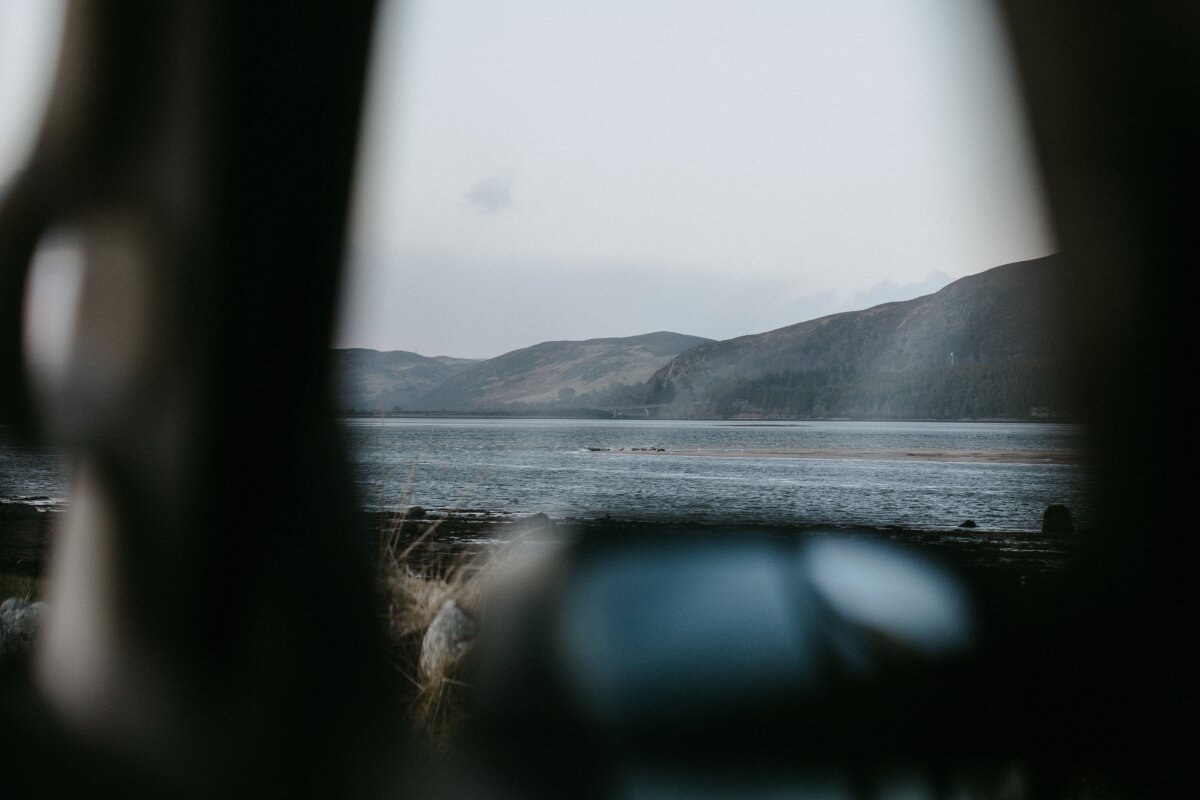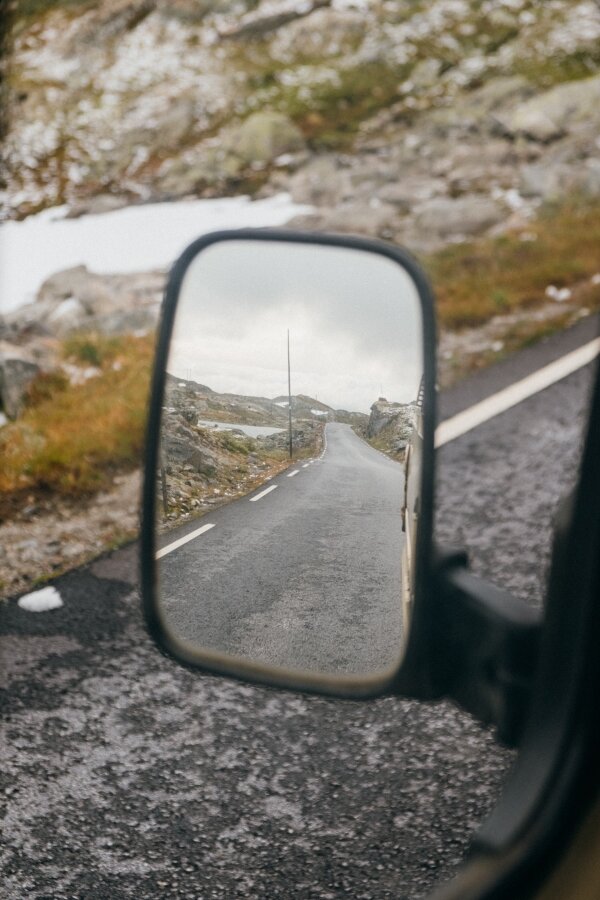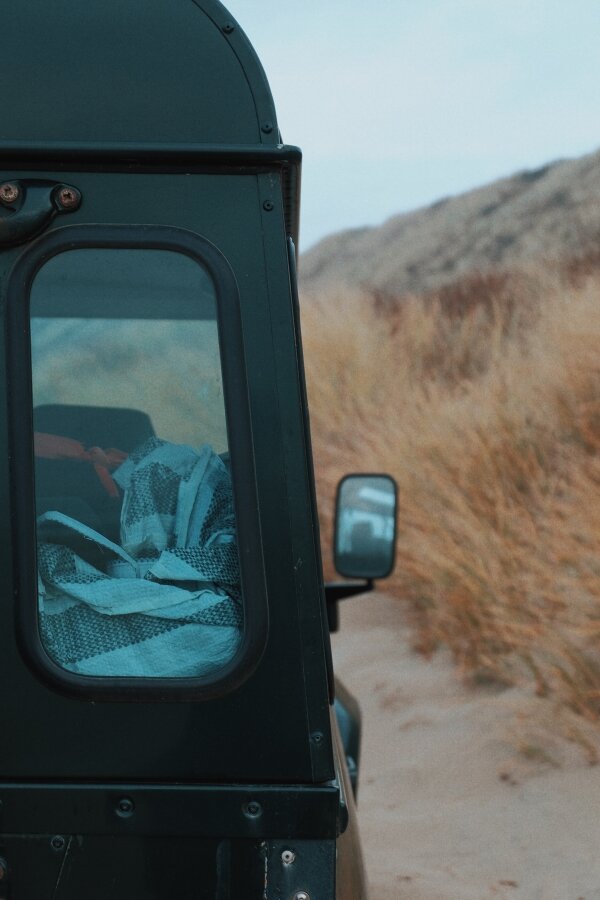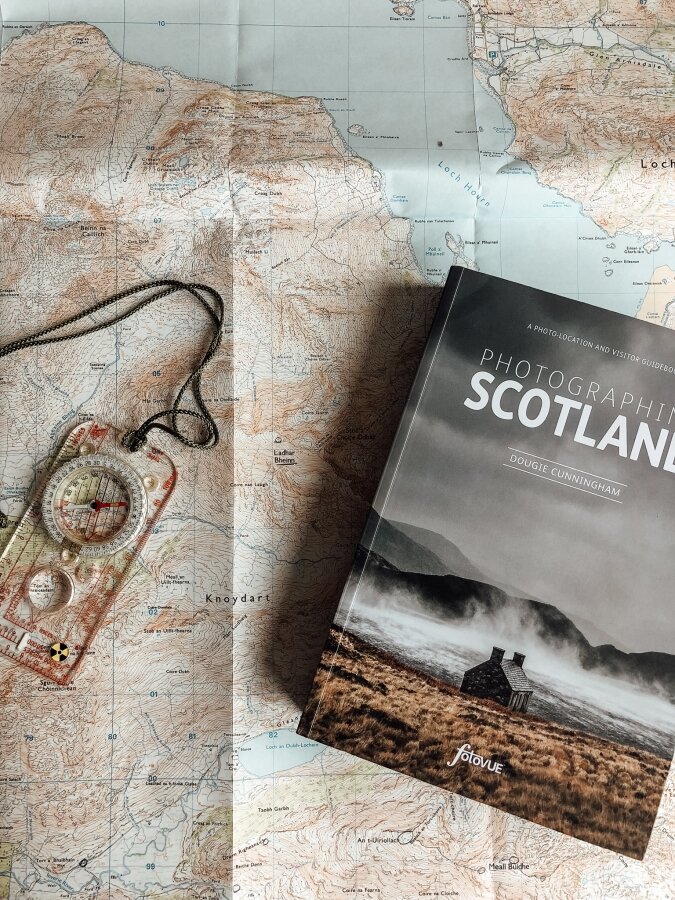Driving in Scotland | A Guide To Rural Roads, Single-Tracks & Passing Places
Planning a road trip around the Scottish Highlands or Islands, but not sure how to use passing places or drive on single-track roads? Don’t worry - my guide to driving in remote Scotland is here to help with practical tips for rural roads.
By: Lesley Stewart | Updated April 2025
Driving on the Isle of Skye.
Driving in Scotland’s towns and cities is a reasonably standard affair that won’t present much of a problem to visitors from overseas or other parts of the UK. However, driving in the Scottish Highlands, the West Coast, and the Islands is an altogether more challenging experience.
If you’re heading to the Isle of Skye, other west coast islands, or the NC500 this year, you should be prepared for Scotland’s remote roads and their, shall we say, unique characteristics. I’m talking, of course, about single-track roads and passing places.
Single-track roads are the narrow, one-car-at-a-time roads that crisscross 2,500 miles of Scotland’s remote places.
Hairpin bends, blind summits, blinder corners, and tyre-buckling potholes are common features. So too are sheep who chomp happily at the roadside, the odd herd of cows relaxing on the tarmac, and skittish deer likely to leap out of the hedgerow.
Needless to say, the Scottish Highlands and Islands offer a unique driving experience!
The red and blue sign at the foot of the iconic Bealach na Bà pass says it best: "not advised for learner drivers", something which could easily apply to many of the roads you’ll encounter on your Scotland road trip.
However, don’t be put off - because you’d miss out on some of the best road trip routes in the whole world and an incredibly memorable driving experience.
I’ve lived in Scotland all my life but spent most of my time in Edinburgh on public transport — I vividly remember my first time on a single-track road, somewhere near Portree, when I was utterly confused about why a car was driving straight at me. Now, as an adopted Highlander, I know exactly what to do.
So, if you’re driving in Scotland’s rural destinations this year, read these helpful tips on single-tracks, passing places, and other things you may encounter on your journey.
How to drive in Scotland — Single-Tracks & Passing Places
This guide is helpful if you plan to drive on the Isle of Skye, NC500, the West Coast, or west coast islands like Islay or Mull — and it’s your first time driving on Scotland’s remote, rural roads. I’m assuming you’re happy with the standard roads around our cities, but are worried about single-tracks and passing places. This guide should alleviate your fears.
1. The basic rules of the road in Scotland
For readers from further afield: in Scotland / the UK, we always drive on the left.
Not all roads have markings or a white centre line. Under those circumstances, keep as far left as you can.
Stick to the speed limits and drive sensibly. Country roads are NOT racetracks, so don’t be an idiot. Otherwise, you’ll end up on the grass verge - or in the back of a police car.
On that note, you can find cautionary tales here.
The speed limit on Scotland’s single-carriage roads is 60mph.
But you’ll likely want to drive slower on single-tracks. If that’s the case, remember to pull over and allow overtaking. Trust me when I say the locals can drive these roads faster than you.
Drink driving limits in Scotland are incredibly strict, so save your G&T till the driving is done for the day. Also, give yourself plenty of time for the alcohol to leave your system before getting back behind the wheel the next morning. If in doubt, don’t drive.
Wildlife encounters on the road to Elgol, Skye.
Things that are good to know about Scotland’s remote roads
In Scotland, our roads are tarmac. However, you might occasionally drive on gravel or farm tracks to reach a remote locale or stay.
Always pay attention—you never know when you’ll need to stop or swerve. On our Scotland travels, motorcycles, sheep, cows, deer, errant tourists, and enormous potholes have appeared from nowhere, each time causing a minor heart attack / very bad language.
The same goes for anticipating and dealing with sharp bends and blind summits. They’re usually sign-posted - but not always.
This year, we’ve seen some outrageous potholes and sharp roadside drop-offs that will absolutely damage your car if you hit them hard or at the wrong angle. Please keep your eyes peeled and prepare to avoid them.
The Isle of Skye’s remote roads are especially potholed right now; we saw numerous cars with tyre and wheel damage, resulting in breakdown trucks and a ruined day out.
Have your breakdown cover details handy!
Don’t slam your brakes on because you’ve seen a Highland Cow or Insta-worthy vista. This causes so many accidents in places like Skye and Glencoe; turn somewhere sensible and circle back.
Attractions are generally marked with brown signposts.
Parking charges are standard in car parks, and generally payable with coins, a card, or the Ringo app.
2. How to drive on single-track roads
What are single-track roads?
Single-track roads are essentially single-lane carriageways, with only room for one car at a time. When you meet a vehicle coming towards you, you or the other driver must slip into a passing place (more on those below). The basic rules and practical tips are:
Look far ahead to spot oncoming traffic.
Ask your passenger to shout when they see oncoming vehicles. The more eyes, the better.
Driving too fast on single-track roads can have consequences that leave the driver sweating buckets or worse. Drive safely and keep to a sensible speed.
If you’re inexperienced in single-track, countryside driving (we’ve all been there, no judgment here), give yourself plenty of time to reach your destination.
Take it slow, be cautious. There’s nothing wrong with that.
But if a car behind you wants to go faster, pull in when it’s safe to do so and let them overtake. You can use passing places for this exact purpose, and it’s better for everyone’s stress levels!
3. How to use passing places
What is a passing place?
If you need to learn anything about single-track roads and driving in the Scottish Highlands, it’s the art of the passing place.
Where the road is not wide enough for two cars to pass each other safely, you’ll find a “passing place.” Remember, roads in the Scottish Highlands and Islands weren’t built for the number of vehicles that now visit; they were built for local traffic.
They are nonetheless an integral part of driving in our remote areas. Narrow single tracks are found in most places, both west and north, and it’s key that you understand how this works:
You’ll usually find passing places on single-track roads – they look like a small lay-by, every 200m or so, usually in sensible places.
Most passing places are sign-posted (these are black and white triangles) and have plenty of space.
Occasionally there’s limited or no signage and the space is either tight/gravelly/muddy. Always pay attention as you drive along and keep an eye out for spots to pull into.
How passing places work
Firstly, don’t be scared of passing places! Thankfully, there is a clear etiquette to keep you right:
If a car is coming, one of you needs to pull into the passing place.
This is not the time to have a stand-off, regardless of what your inner cowboy might be telling you.
Essentially, whoever is closest to the passing place must pull in. Depending on the circumstances, that might mean someone needs to reverse.
Remember we drive on the left, so never, ever cross the road to get to a passing place.
If the closest passing place is on the right, you must stop, wait, let the oncoming car arrive, and use the passing place. Then, you must continue slowly to allow the other driver to return to the road behind your car.
Use your lights and indicators. Drivers frequently indicate then flash each other to say: “you keep coming, I’ve pulled in”. If you’re the one pulling in, then give a wee flash and indicate left.
On hills, the car going uphill usually has priority.
4. If in doubt, use common-sense
Lastly, many of these rules aren’t written down anywhere. They certainly don’t appear in the highway code. In fact, many rely on good, old-fashioned politeness and common-sense. If in doubt use both, they’ll go a long way.
5. What not to do in passing places
Passing places are NOT parking places, tea break stops, or photo opportunities – they are solely for keeping the traffic moving. Otherwise, you risk being labelled (quite rightly) a complete nuisance by irritated road users.
Driven past the passing place and met an oncoming car? Do not drive onto the grass verge. There are often ditches, mud, bracken, and boulders, not to mention a delicate ecosystem of grass and plants. I’ve seen cars stuck on the verge with shredded tyres because of rocks more than once - always use a passing place, even if it means reversing.
6. Passing place etiquette
Passing places require a certain level of driver etiquette - a.k.a a non-negotiable protocol locals follow on rural roads. Nothing shouts “tourist” more than failing to follow these driving niceties:
It is vital to wave and smile at the drivers who have stopped to let you pass. Likewise, reciprocating a wave is an unbreakable tradition.
A full wave, a raised finger from the steering wheel, a big smile, thumbs up, a quick flash – whatever takes your fancy. The point is always to acknowledge the other driver who pulled in. It’s the polite thing to do, it shows courtesy, and gives everyone happy vibes.
If it’s your first time using a passing place and you’re sweating buckets, ask your passenger to give a friendly “2 minutes” wave. Everyone has been there, everyone understands.
Failure to do the above will result in you being called very, very impolite names by the driver on the other side!
7. Watch out for wildlife
It’s not just other road users to you need to be aware of - local wildlife also love to use Scotland’s roads! We’ve had deer, pheasants, and rabbits run out from the hedgerow. Sheep chomp at the roadside and are likely to dart in front of a moving vehicle if startled. Cows wandering on the tarmac believe they have the right of way (to be fair, they’re much bigger than your average vehicle).
It goes without saying you need to drive sensibly when wildlife is present, but always keep your eyes peeled for an unexpected appearance!
8. Campervans
There’s been a rise in the popularity of road tripping around Scotland in hired campervans. Which I get - van life is the ultimate adventure.
However, campervans can cause problems because (a) these larger-than-life vehicles are often too big for Scotland’s narrow roads, (b) they go too slow and cause congestion, and (c) drivers don’t have experience dealing with these huge vehicles, especially reversing.
I suggest hiring a smaller campervan that will handle tight corners and reverse on single-track roads without leaving you sweating buckets.
Check out these Scotland motorhome experts for helpful hints and tips on responsible campervan travel.
9. Google Maps + navigation
Phone and internet signals in Scotland’s more remote places are frequently hard to find.
If you’re using Google Maps for navigation, I can’t stress enough how important it is to make your map available offline. This means you can still find your way around even without a signal. It’s also a great idea to save your accommodation, petrol stations, and any sites on your map - or at least have a note of them to save you from getting lost if you can’t access the internet.
Also, watch out for road signs, which are frequently more helpful in rural locations than Google Maps!
10. Finally, be respectful of local drivers
Lastly, remember that these country roads were built for and are used by local people trying to get on with their normal, everyday lives.
You might be on holiday, but the person behind you is trying to get to work, the shop, the hospital, or home. Some previously quiet areas of Scotland (like the NC500 or the Isle of Skye) have seen a sharp rise in the number of tourists and vehicles on the road in recent years, which can be seen as a nuisance, mainly because of road congestion.
So, be extra respectful, drive sensibly, and follow the rules of the road.


















